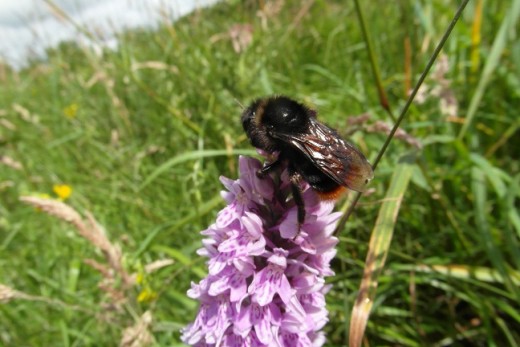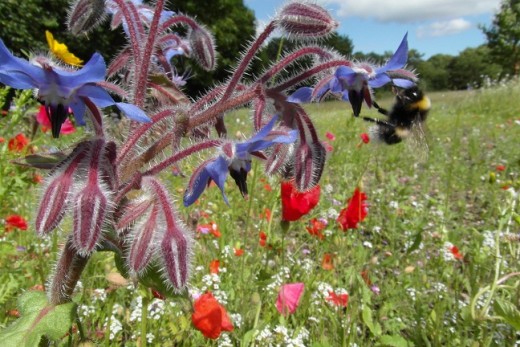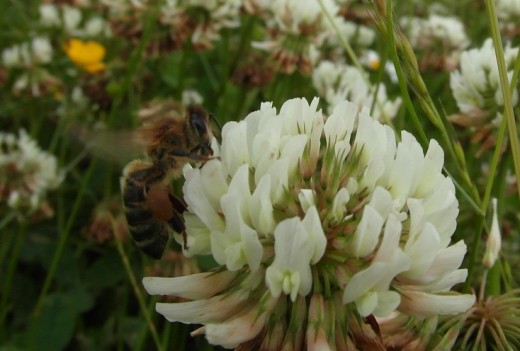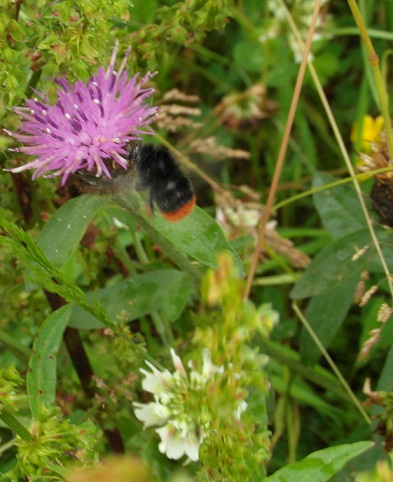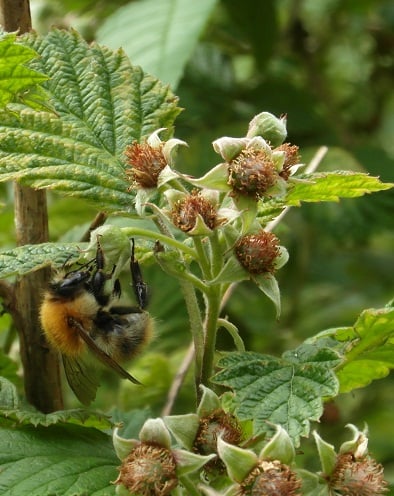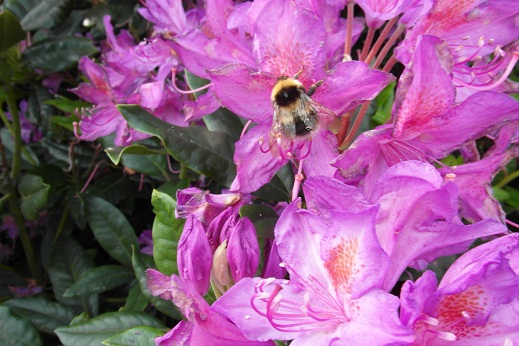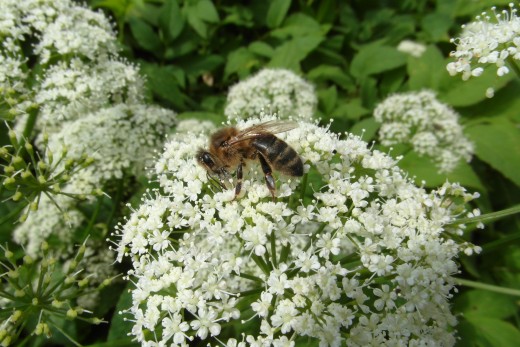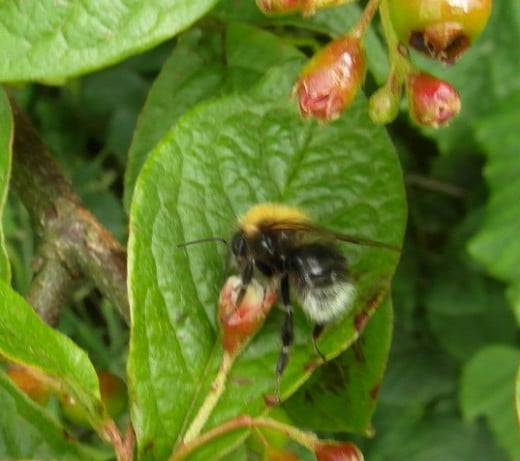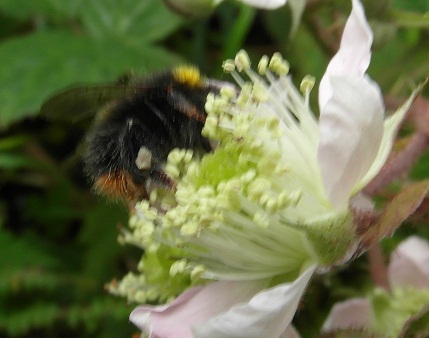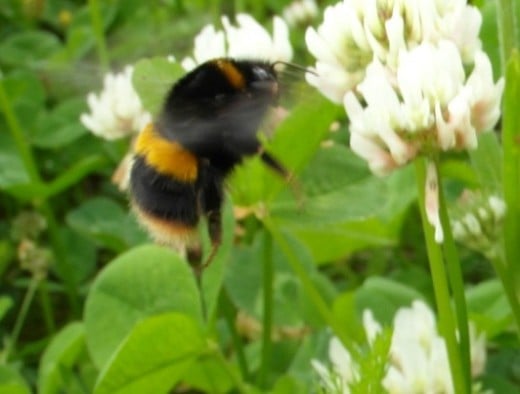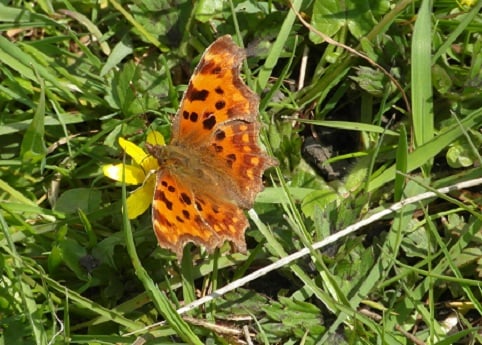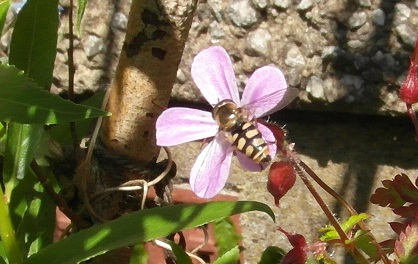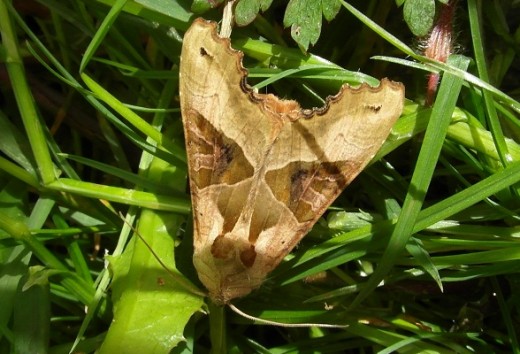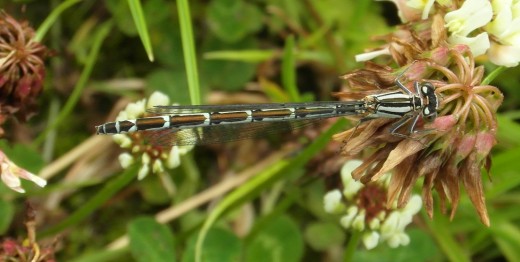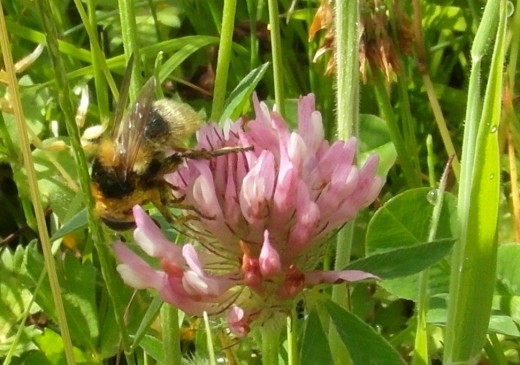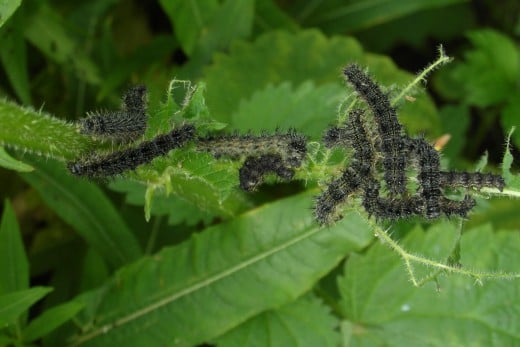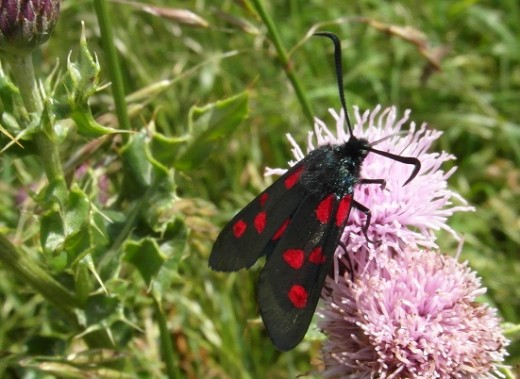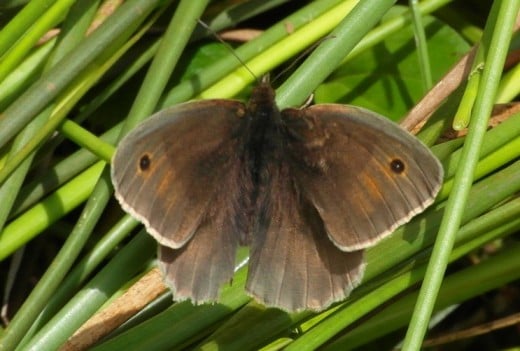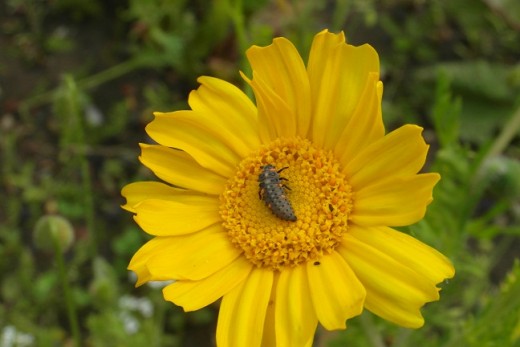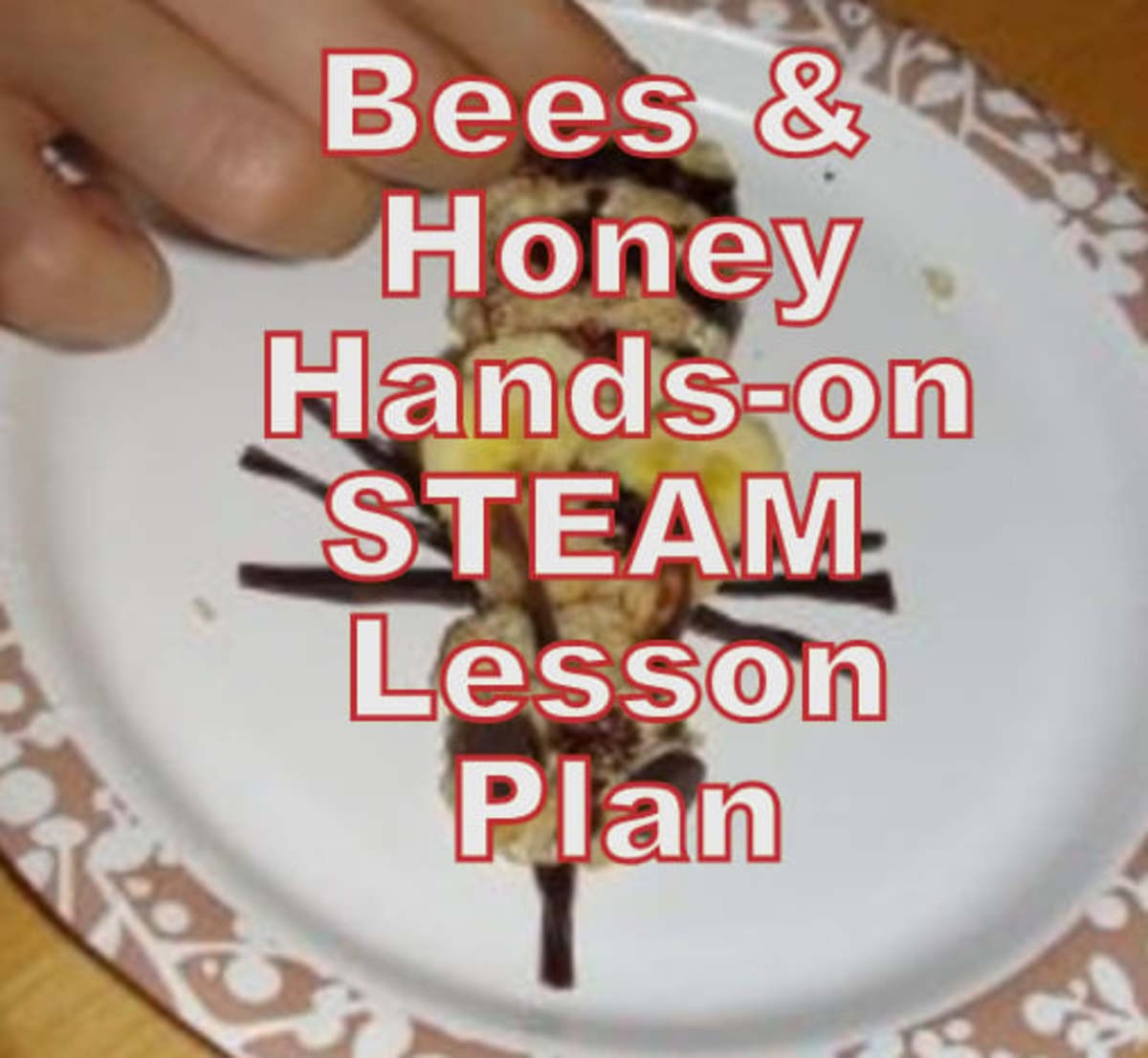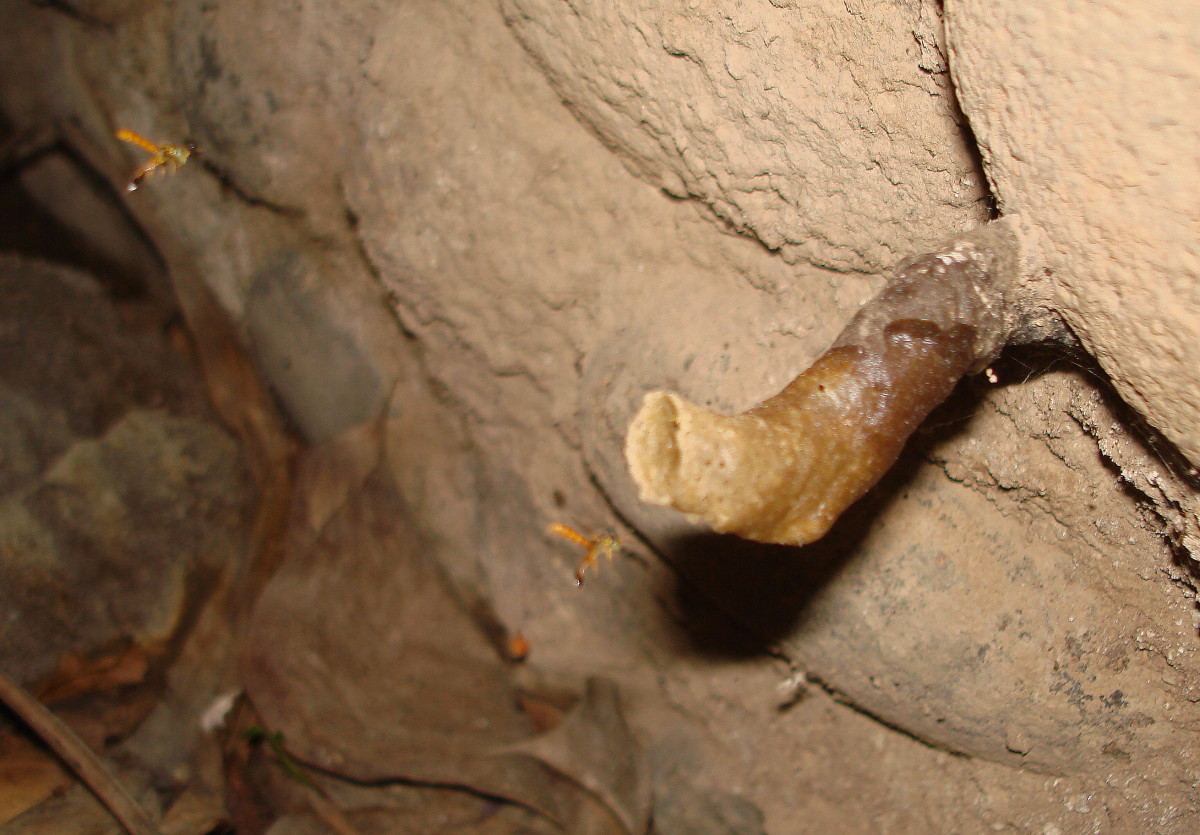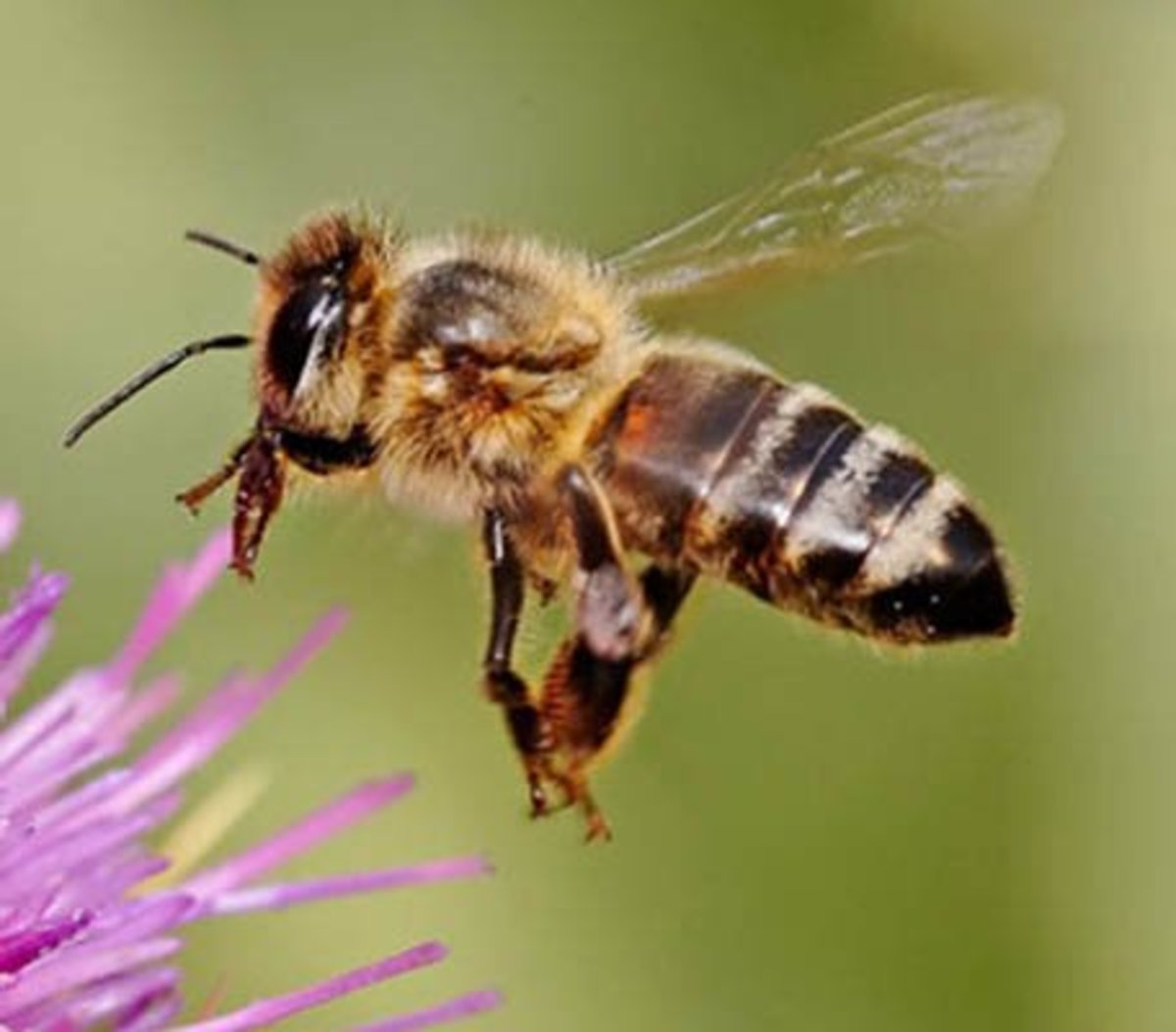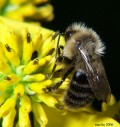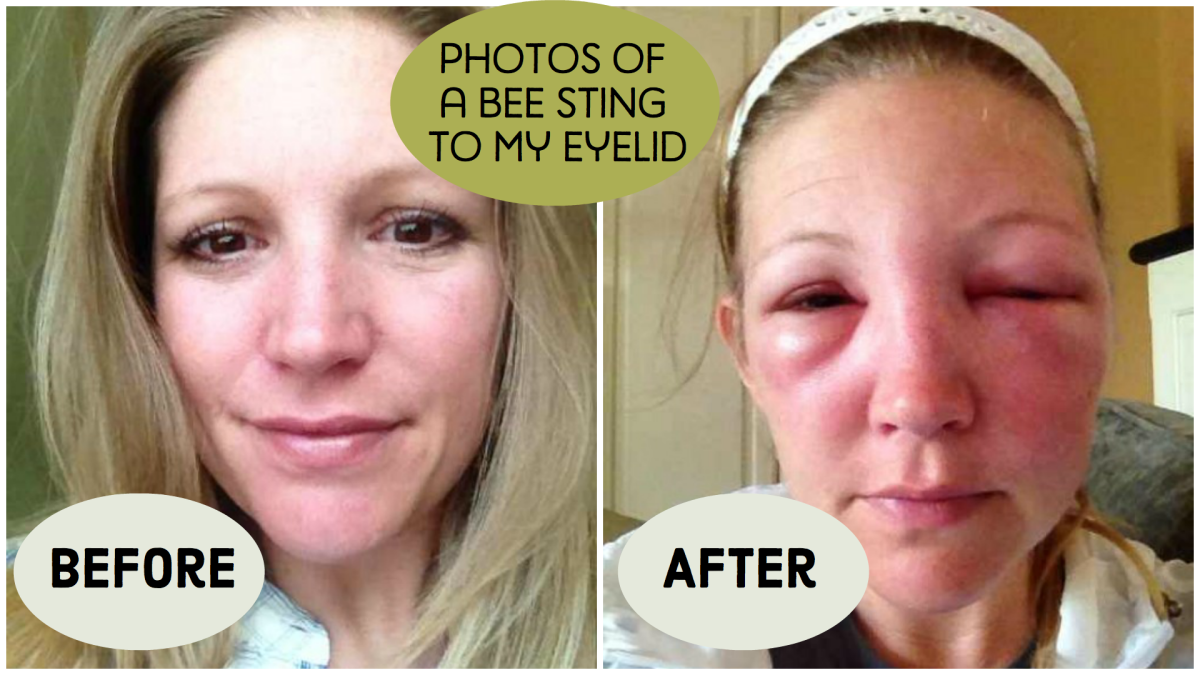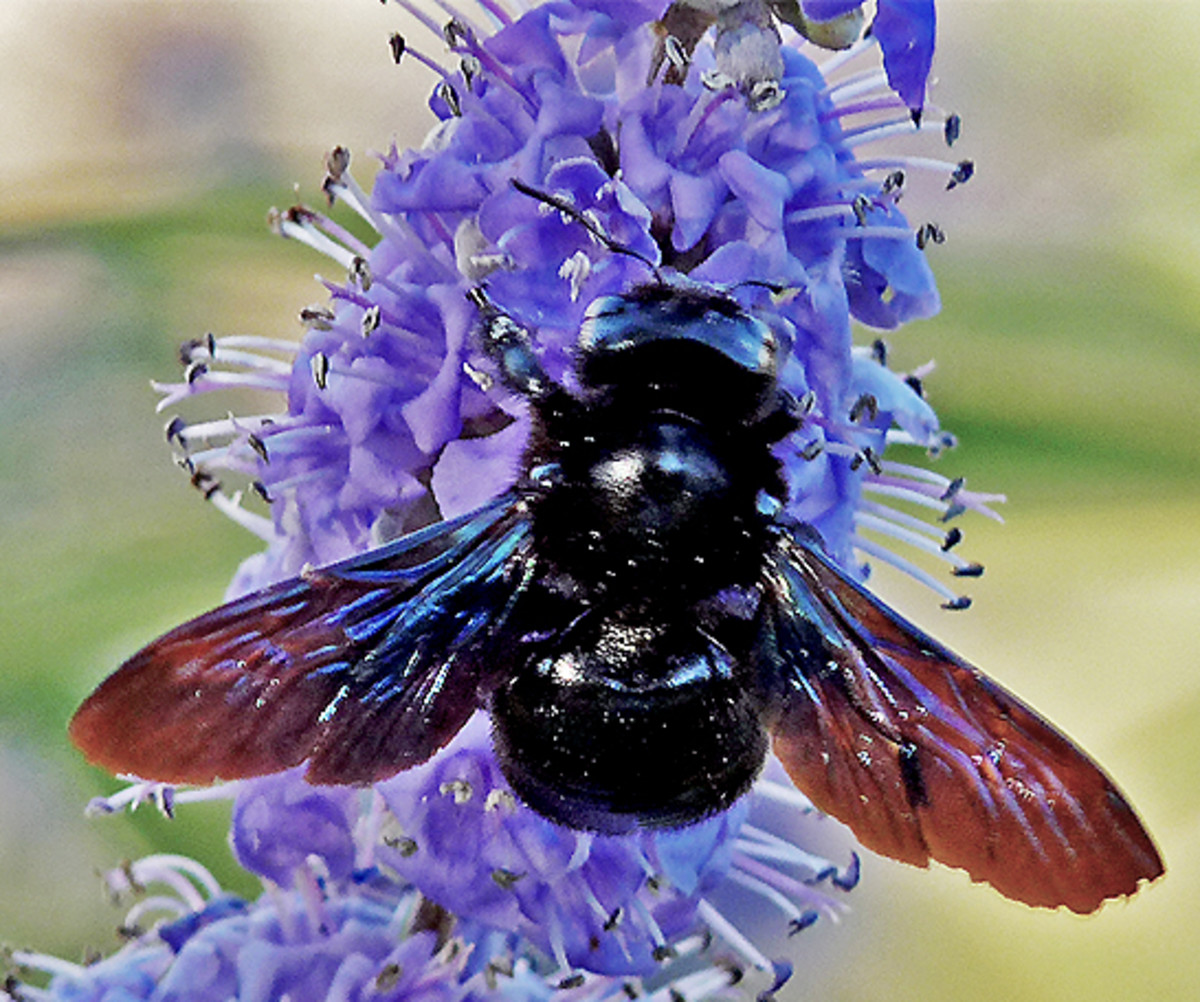How to Help Bees
Some of the Bee Species you could be Helping
Click thumbnail to view full-size









Why do Bees need Help?
Populations of honeybees and bumblebees have been declining. Pesticide and herbicide use play a part in destroying the bees' food sources and killing the bees themselves, in honeybees the varroa mite, Varroa destructor, has been spreading round the world to all continents except Australia so far. It only reached the UK in 1992 (Beebase, DEFRA) but in 20 years has become widespread all over the UK. A hive infested with varroa mites will usually die out within three years unless beekeeper takes preventative action. For bumblebees loss of habitat is key as modern farming and gardening methods have reduced the available food sources (wild flowers) and nesting areas.
Thankfully the plight of honeybees and bumblebees around the world has now come to most people's attention and a lot of people are asking "how can I help bees?" Given our reliance on bees to pollinate many of our favourite and essential foods, efforts to halt and reverse the population declines of bee species are gaining momentum and there is a lot you can do to help.
Bees on the Verge
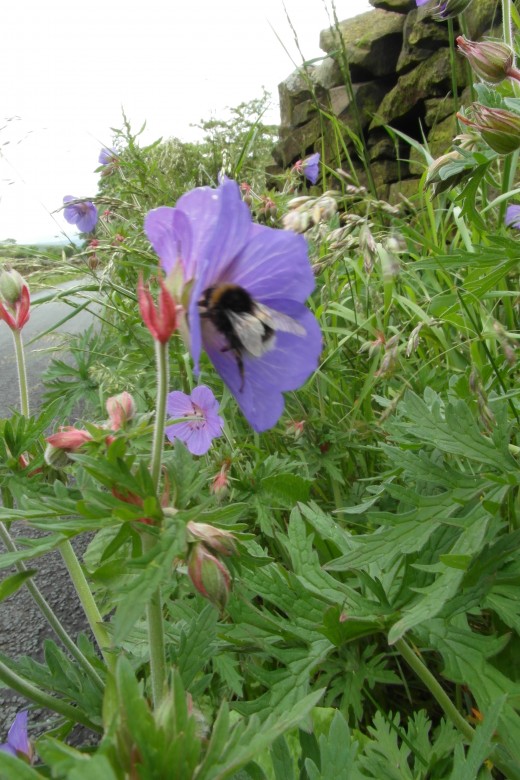
Help Bees in Your Neighbourhood
Road verges and roundabouts are often full of wild flowers if they are not kept closely mowed.You can encourage councils to allow road verges to grow long and mow them late in the year after wild flowers have set seed.
In the UK you can contribute photos of bumblebee species you have seen in your area to the Bumblebee Conservation Trust (BCT) so that they can accurately map the current distribution of different species.
In America you can join the American Beekeeping Federation and your membership fee will go towards supporting the countries honeybee population, Some states have there own bumblebee programs; for example in Texas you can contribute your sightings to Bumblebees of Texas.
Volunteer to help the your local beekeepers or bumblebee association, the BCT or Buglife. Opportunities include leading a bee walk in your area, manning a stand at a country fair or garden centre to enthuse and inform people about bees and what they can do to help and creating and distributing a newsletter about gardening for bees.
You could even decide to start keeping a hive of honeybees. If you are thinking about doing this you will usually find that local bee keepers are very generous with their time helping novices and that courses are run locally so that you can learn how to keep bees and collect your own honey.
Love Weeds
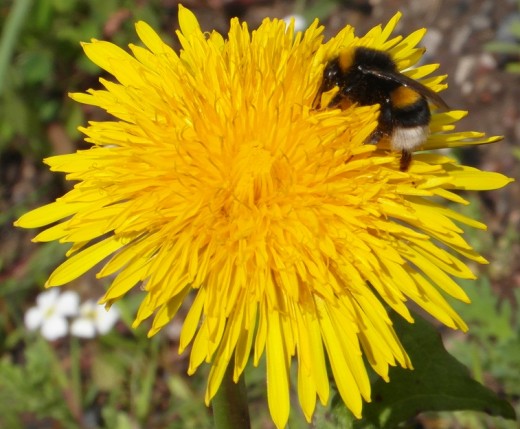
Be Untidy
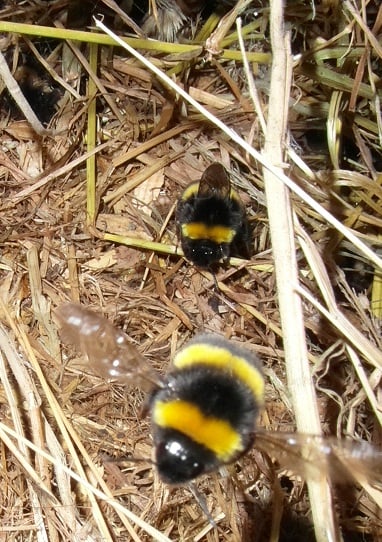
Help Bees in your Garden
The good news is that some of these tips require less work from you rather then more!
- Love weeds - a lot of weeds are native wildflowers and very attractive to bees. Why not leave some weeds and watch what comes to visit them.
- Plant drifts of flowers that bees like. Bees and honeybees tend to return to the same species of flower during any one day, so they like finding a decent sized patch of the same flower because it reduces the time spent flying between blooms. I've watched bumblebees in a meadow containing red and white clover and a bee who has decided to collect white clover nectar or pollen that day will almost always fly over and ignore the red clover. This is handy for the flowers because it means that pollen is transferred between flowers of the same species and the flower can set seed and ensure more flowers are produced next year.
- Even if you only have a window box planting flowers that bees like will help. For example; a wild flower combination of blue self heal and yellow meadow vetchling could look great in a small planter or window box and bees would love it.
- Be untidy - bumblebees will often nest in undergrowth, a pile of raked leaves or, as I found in my garden, a nest in my shed under a heap of straw.
- Reduce or eliminate pesticide and herbicide use in your garden.
- Don't call in pest control - if you have bumblebees, leave them in peace, they are unlikely to sting you whilst they are out gathering food and only tend to get cross if they think you are going to damage the nest.
- Do call your local bee keeping association if you have a swarm of honeybees. They will often have someone available who will collect the swarm and be able to house it in one of their beehives.
Burnley's Bee Project

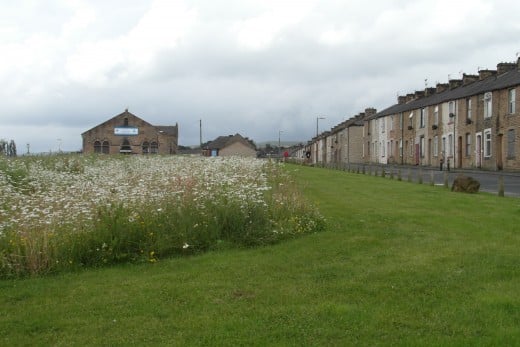
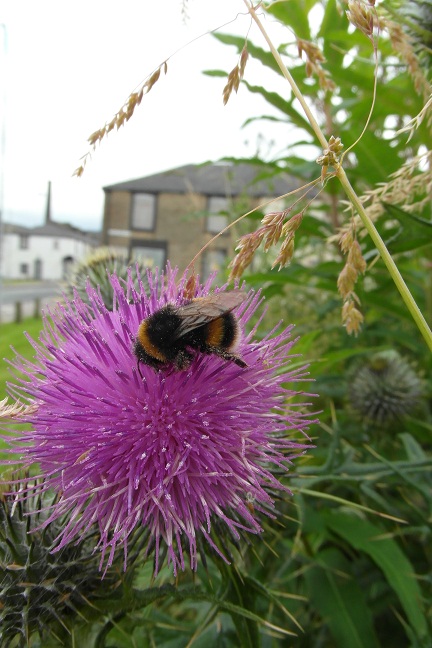
Support Bee Projects
Your Local Council
Find out whether your local council are participating in any bee projects and if they are write and thank them. Councils are more likely to keep doing something if it is appreciated by the people who live locally.
Voluntary Organisations and Charities
These may be working locally with your council or landowners, nationally or even internationally on projects to help bees thrive.
To find out about bee projects in your area:
1) do an internet search. For example I tried 'bee project in North Yorkshire' and found out about the 'Bee Roads' project which aims to create two stretches of wildflowers from north to south and east to west across Yorkshire.
3) Walk around your area and you might get an inkling that something to support bees is going on around your town or village. I was very pleased to find lots of wildflowers on a brownfield site near my home in Burnley this spring. In June when I found yellow rattle I begun to wonder if they had been sown deliberately and I was even more suspicious (but in a good way) when corncockles flowered.
3) Send your council an email asking whether they are doing anything to help bees in your borough. I got a fast and helpful response from Burnley Borough Council about a combined project with Burnley Offshoots to support the native honeybee with bee friendly planting. The council have sown areas of wildflower meadow in parks and greenfield sites around the town and offshoots have set up bee hives and are training local people who want to keep bees and supplying them with bees. This is brilliant - Burnley at the forefront of conservation. The council and Offshoots deserve to have praise heaped upon them. If enough people send an email or letter of appreciation to a council, it should encourage them to continue with a bee project.
4) If you find there are no council supported bee projects, you could send them an email or a letter showing what other areas are doing for bees and encourage them to get involved.
Wild Flower Meadows
Whilst a lawn can be a good place for children to play and set off the surrounding planting, being made up of just a few species of grass means that lawns don't provide a habitat or food source for many different insects such as bees and hoverfles.
Why not turn part, or even all, of your lawn into a wildflower meadow? Wild flower meadows are brilliant - they're like having a mini Serengeti on your doorstep - don't worry, you won't find lions and wildebeest out there, but on a smaller scale you will find lots of fascinating invertebrate in addition to the bees. For example: butterflies and day flying moths such as the six spotted burnet moth, nocturnal moths resting for the day such as the angle shades moth, hoverflies, damselflies and solitary bees.
Insect Safari - What Could you Find in your Meadow?
Click thumbnail to view full-size








What to Do with the Spare Turf
1) Use it to patch other areas of your garden.
2) Give it away
3) Sell it - if you're taking out a big lawn
4) Compost it.
How to Make a Wild Flower Meadow
This isn't just a question of letting your lawn grow long and not weed killing the daisies and buttercups that appear. There are two options:
1) Cut the proposed meadow area very short and using a trowel insert plug plants of wild flower species in it. This is relatively expensive and it is hard for the wildflowers to compete with well establish lawn grass.
2) Strip off the turf in your meadow area. Sow a wildflower meadow seed mix - this will usually have a proportion of 20% wild flower seeds and 80% mixed grasses. You need choose a mix which will suit your soil conditions.
Wild Flower Meadows
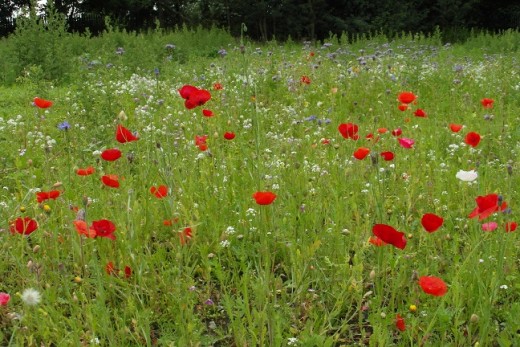
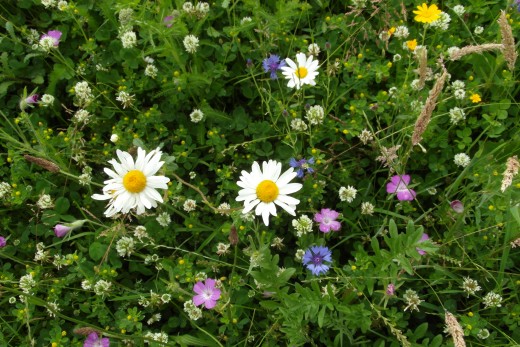
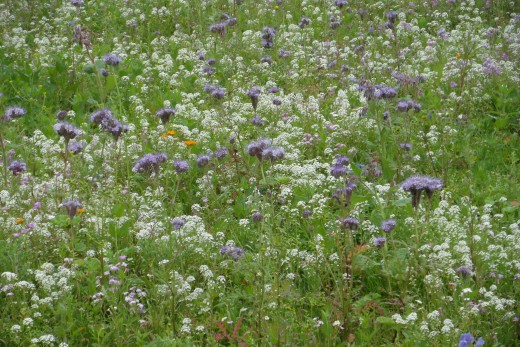
Make a Bee Friendly Meadow
If you use native wild flowers you can be confident that the bees will enjoy them and that they will provide food for other native invertebrates, but you could sow a non native bee friendly mix as an alternative or even have an area of both. This mix could include flowers from around the world that are attractive to honeybees and bumblebees and some may not have any grass seed in. If the flowers are annuals and not hardy you will need to collect seeds to resow the following year.
In the UK a non native bee friendly mix might contain flowers such as borage, phacelia, marigold, honesty, Lobularia maritima (alyssum) and evening primrose.

